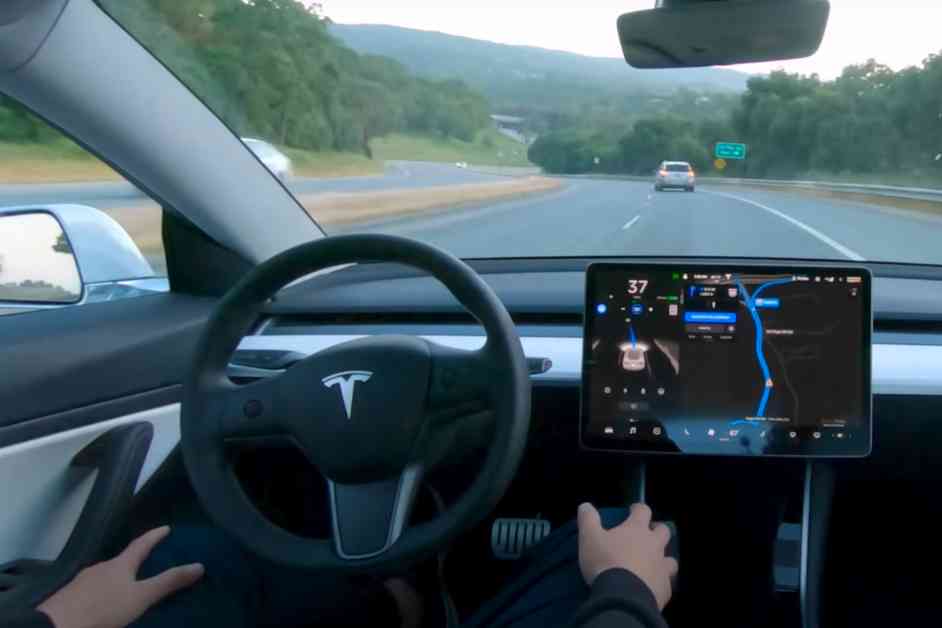Tesla’s Full Self-Driving (FSD) option has been a hot topic of discussion in the automotive industry, with CEO Elon Musk touting the potential of autonomous driving and robotaxis for the company’s future. However, recent experiences from Wall Street analysts and Tesla drivers have raised concerns about the system’s reliability and safety.
Wall Street Analyst’s Close Call
One such incident involved William Stein, a Truist Securities analyst, who decided to take up Musk’s challenge and personally test the latest self-driving feature. During his test drive, Stein encountered a near-crash incident that raised doubts about the system’s capabilities. He reported that the Model Y he was in made several illegal manoeuvres while in FSD mode, such as changing lanes on a highway section marked with solid white lines, which are not meant for lane changes.
“The Model Y accelerated through an intersection as the car in front of us was completing a right turn,” Stein recalled. “My quick intervention was necessary to avoid a potential accident.” Another close call occurred when a police officer signaled for the vehicle to pull over to make way for a funeral procession, prompting Stein to take control of the vehicle once again.
Despite these issues, Stein did acknowledge some improvements in the FSD system compared to his previous test drive. He noted that the car handled challenging disruptions like lane closures, potholes, and confusing traffic flows better than before. The newer FSD version also demonstrated more active lane-switching capabilities and allowed for a higher top speed, addressing some of the concerns raised in his previous evaluation.
Regulatory Scrutiny Of FSD And Autopilot
The safety of Tesla’s FSD and Autopilot features has come under scrutiny from regulatory agencies, with concerns about their compliance with traffic safety regulations and their potential risks to motor vehicle safety. In January, the National Highway Traffic Safety Administration (NHTSA) mandated a recall of all 363,000 US vehicles equipped with Autopilot due to safety concerns.
The NHTSA found that the Autopilot feature posed an unreasonable risk to safety, prompting the recall of all affected vehicles. Additionally, a two-year investigation into approximately 1,000 crashes involving Autopilot led to a recall of nearly all 2 million Tesla vehicles by the agency. The investigation revealed that the system’s software may not effectively prevent driver misuse, increasing the risk of accidents.
Furthermore, a recent recall of 1.8 million Tesla vehicles was ordered by the NHTSA due to a software glitch that failed to detect an unlatched hood, potentially causing it to open while driving. Tesla plans to address this issue with an over-the-air software update to ensure the safety of its vehicles on the road.
Musk’s Vision for Autonomous Driving
Despite the challenges and criticisms surrounding Tesla’s FSD and Autopilot features, Elon Musk remains confident in the potential of autonomous driving and robotaxis. He believes that FSD surpasses human driving in terms of safety, citing a 2020 study that showed a significant reduction in road accidents when using Tesla’s Autopilot system.
Musk has staked Tesla’s future on the development of a fleet of driverless robotaxis, envisioning a world where self-driving cars revolutionize transportation. He encourages skeptics to try out the FSD system firsthand, arguing that once people experience it, they are more likely to continue using it due to its compelling nature.
In conclusion, the testing of Tesla’s $8K Full Self-Driving option has highlighted both the potential and challenges of autonomous driving technology. While there have been instances of near-crashes and regulatory scrutiny, there are also improvements and advancements that show promise for the future of self-driving vehicles. As the industry continues to evolve and adapt to new technologies, it will be crucial for manufacturers like Tesla to address safety concerns and ensure the reliability of their autonomous driving systems for the benefit of all road users.













